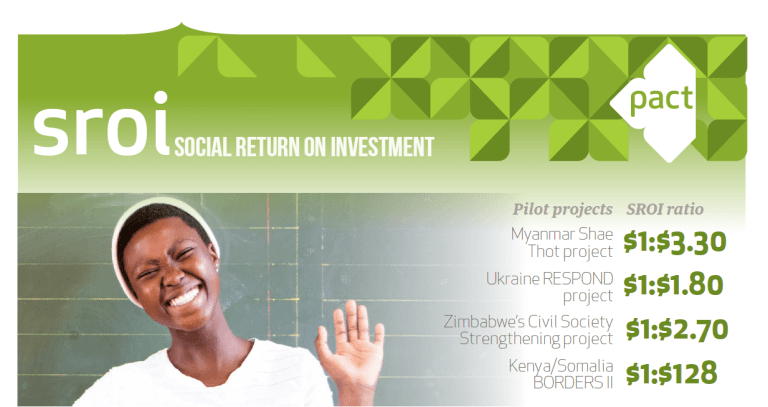Blog
Value what matters: Measuring program value with social return on investment

Results and measurement are hot topics in international development. Many of these discussions focus on how best to measure the value of our programs, particularly in environments where it is hard to predict or pre-define outcomes. Measuring outputs is easy. How many children were weighed? How many trainings were held? It is harder to capture the comprehensive benefits participants gain and the value to their lives.
In 2015, Pact began testing social return on investment, or SROI, for better understanding the value of our work. SROI is a principles-based, analytical framework for capturing and communicating the value of programs. Used in a particaptory manner with all project stakeholders, SROI is designed to uncover outcomes and their relative value. At its most basic, it expresses change—social, environmental, economic—valued in dollars.
SROI ratio = value of outcomes/investment (or cost)
For example, the SROI ratio allows us to say that for every dollar we contributed to a project or activity, $3 of social value was created for those participating in the project. In a resource-constrained environment, this ratio is easy to understand and provides a better picture of the value of donor funding relative to outcomes.
Beyond the data required to calculate this ratio, we gathered a wealth of qualitative data to help further explain what project participants value most and why. The combination of this data is powerful for communicating the story of change, but also for modifying program aspects to be as accountable as possible to participants. It helps ensure we are providing them the most value.
From 2015-16, we worked with colleagues and partners in four projects in Myanmar, Ukraine, Zimbabwe, and the Kenya-Somalia border region to apply the methodology, with mentoring from Social Value UK. We found that each project had nearly a 2 to 1 social return on investment. We also learned a lot about how best to implement the methodology to utilize it in other projects.
While SROI is not new—organizations working in developed countries have been using SROI for years—few development organizations working in low-income countries have used it. Pact is a pioneer in this field. SROI has helped us better understand and communicate our own story of change, especially our integrated approach to development.
To learn more about our four cases, read our SROI fact sheet.